Are you curious about planting loropetalums in your garden?
Loropetalum, also known as the Chinese fringe flower, is a colorful red and green plant with pink flowers. It does best with other plants that thrive well in full sunlight or partial shade. Consider planting your loropetalum in soil with good drainage for the best results. Otherwise, you could risk mildewing and root rot.
By choosing the right companion plants for your loropetalum, you can create a stunning and harmonious garden that’s sure to impress any visitor.
Continue reading this article to learn more about the top 10 loropetalum companion plants, including what these plants look like and why they make good companion plants.
What are the best loropetalum companion plants?
The best companions to the loropetalum thrive in full sunlight or partial shade and require average water in well-drained soil.
Some good loropetalum companion plants include firepower nandina, hibiscus, and ornamental grass. They require the same plant care routine and have a complementary aesthetic to the loropetalum.
Other similar posts:
- Green Onion Companion Plants
- Japanese Forest Grass Companion Plants
- Brussels Sprouts Companion Plants
Top 10 loropetalum companion plants
The best companion plants for the loropetalum are firepower nandina and hibiscus, among many others.
The following includes the top 10 loropetalum companion plants:
- Firepower nandina
- Hibiscus
- Ornamental grass
- Camellia
- Ice Dance Japanese sedge
- Daffodils
- Iris
- Hostas
- Marigolds
- Pansies
1. Firepower nandina

The firepower nandina is the best companion plant to loropetalums because of its appearance and gardening similarities.
Firepower nandina is a shrub that requires the same gardening conditions as loropetalums, like full sunlight, acidic soil, and regular watering. In addition, the colorful red leaves complement the red tones of the loropetalum nicely.
Mature Size: Firepower nandina is roughly 2 feet tall and wide.
Flowering: It does not bloom any flowers.
Key Features: Firepower nandina is low-maintenance and does not require regular pruning like traditional hedges.
2. Hibiscus
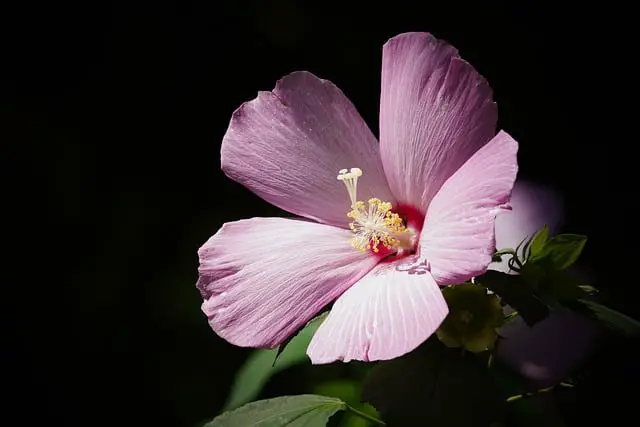
Hibiscus is an annual perennial that pairs nicely with the loropetalums. They grow well in full sun or partial shade. Hibiscus can grow year-round in the right environment. Hibiscus requires the same gardening conditions as the loropetalum, making it an excellent companion.
Mature Size: Hibiscus grows roughly 1 to 2 feet tall and wide.
Flowering: Purple, white, pink, and yellow, star-shaped flowers blossom every spring.
Key Features: Some varieties of hibiscus are edible and often attract hummingbirds.
3. Ornamental grass

Ornamental grass makes an excellent companion plant to loropetalums because it looks great and requires the same care techniques. It needs well-drained soil and full sun, similar to the loropetalum. These grasses are drought-tolerant. Therefore, they can withstand long periods without water.
Many species of ornamental grasses vary in color, size, and shape.
Mature Size: Ornamental grass can grow roughly 15 feet tall.
Flowering: Colorful tufted flowers bulb at the end of every summer.
Key Features: Prune ornamental grass by fall to avoid overgrown grasses.
4. Camellia
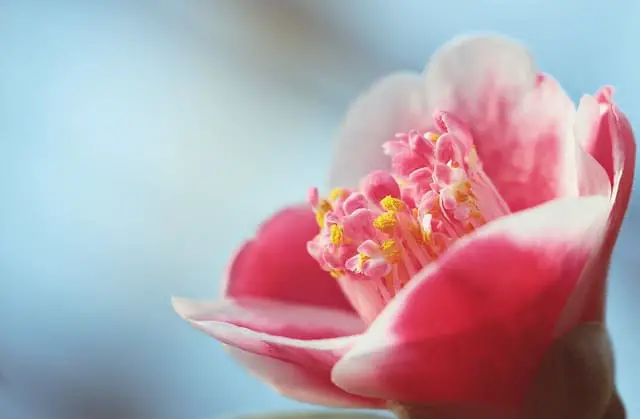
Camellias are easy-to-care-for evergreen shrubs that require minimal pruning. They make a good companion plant with loropetalums because of the similar plant care requirements and complementary colors.
Camellias require acidic soil and partial sunlight. Water your plant regularly, at least twice weekly, ensuring the soil remains moist without oversaturating.
Mature Size: Camellias grow 2 to 12 feet tall and 2 to 10 feet wide.
Flowering: White, yellow, red, lavender, and pink flowers bloom in late fall, winter, and early spring, depending on the flower species.
Key Features: Camellias can grow almost any time of the year except summer months.
5. Ice Dance Japanese sedge
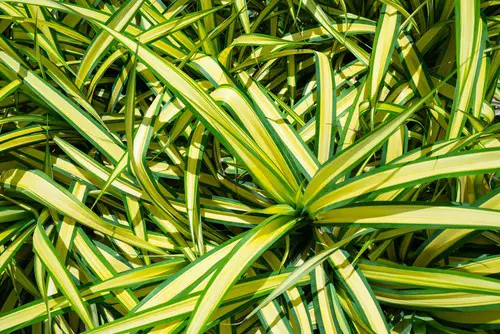
Ice Dance Japanese sedge is a succulent that makes a great companion to the loropetalum. In addition to the similar plant care, the subtlety of the succulent makes for a great companion aesthetically.
The Ice Dance Japanese sedge needs roughly 6 hours of full sunlight daily, with the remainder of its day remaining in the shade. It needs average watering and should be planted when the temperature cools down.
Mature Size: Ice Dance Japanese sedge grows roughly 10 to 16 inches tall by 18 inches to 2 feet wide.
Flowering: The loropetalum blooms small white flowers every spring.
Key Features: The Ice Dance Japanese sedge is toxic to domestic animals, wildlife, and livestock.
6. Daffodils
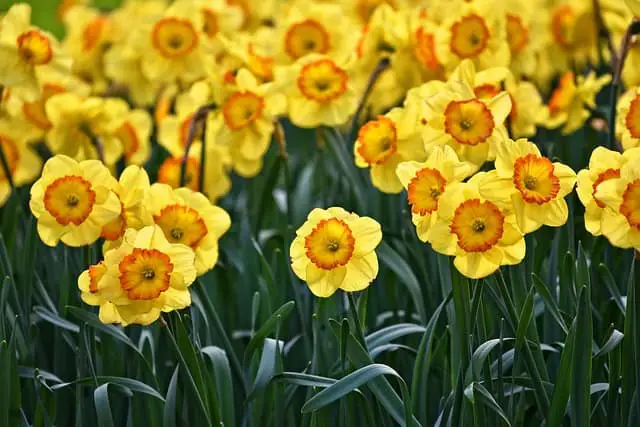
Daffodils have a lot of commonalities in their plant care routine, making them a perfect companion plant for the loropetalum. They require minimal effort and full sunlight for at least 6 hours a day. You must water your daffodils regularly until summer, when they go dormant. During dormancy, daffodils prefer a drier soil.
Daffodils can do well in partial shade but grow best in full sunlight. Daffodils are more likely to blossom outdoors in the sunlight than indoors in the shade.
Mature Size: Daffodils grow between 6 to 30 inches tall and 6 to 12 inches wide.
Flowering: Yellow, white, pink, or orange flowers sprout during late winter or spring.
Key Features: Daffodils are toxic to humans and domestic animals.
7. Iris
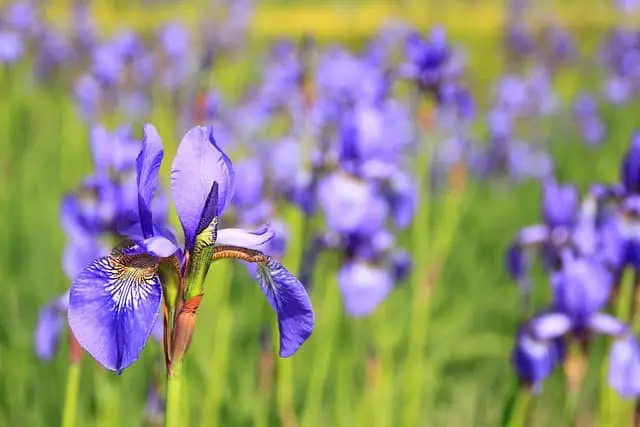
Irises are colorful flowers that make excellent loropetalums companion plants. There are roughly 300 species of irises, available in two main types, which grow from either bulbs or rhizomes.
They require the same gardening conditions as the loropetalum. Soil must remain moist and well-drained, meaning you should water your Irises regularly if you want them to survive. Similar to the loropetalum, keeping them in sunlight leads to a successful bloom.
Mature Size: Irises grow roughly 6 inches to 4 feet tall.
Flowering: Purple, white, blue, and yellow flowers bloom between late spring and late summer.
Key Features: Irises are toxic to humans and domestic pets.
8. Hostas
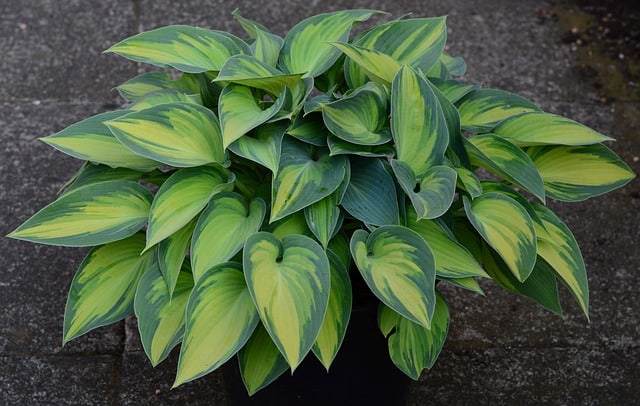
Hostas are a large, hardy perennial. It is low-maintenance and does not require much attention, making it more of an aesthetic companion. Hostas do not require excessive sunlight or watering, so you can plant them in corners, backgrounds, or under trees to complete your garden.
Mature Size: Hostas grow roughly 6 to 48 inches tall and 10 to 60 inches wide.
Flowering: White, purple, and pink flowers bloom during the summertime.
Key Features: Hostas are toxic to domestic animals, like cats and dogs.
9. Marigolds

Marigolds are the perfect companion to loropetalums because of their similar plant care and colorful appearances. They complement loropetalums nicely and can bring your garden to life with their bright colors.
They need full sunlight for at least 8 hours daily. Marigolds thrive in moist, well-drained soil, so you should water them regularly.
Mature Size: Marigolds grow to roughly 4 to 48 inches tall and 6 to 24 inches wide.
Flowering: Yellow, white, red, orange, and bicolored flowers bloom every summer.
Key Features: Marigolds are the best loropetalum companion plant for bringing color to your garden during summer and fall.
10. Pansies

Pansies are beautiful flowers that partner well with loropetalums. They come in an assortment of colors that complement the red appearance. Pansies are the best companion plant to loropetalums during winter or spring. However, in some regions, they may bloom at slightly different times.
Pansies require the same conditions as loropetalums, making it easy to raise them in the same flower beds. They need full or partial sunlight to reach full maturity and thrive in slightly acidic soil with good drainage.
Mature Size: Pansies grow around 4 to 8 inches tall and 4 to 6 inches wide.
Flowering: Orange, red, yellow, purple, blue, pink, white, and multicolored flowers bloom year-round depending on the climate.
Key Features: Pansies attract butterflies. The petals of pansies are known for resembling faces.
Summary
The loropetalum prefers full or partial sunlight and acidic soil. You should plant your loropetalum in a pot with good drainage with enough room to fully expand. The perfect companion plant complements these gardening requirements and adds to the colorful aesthetic of your loropetalum.
In addition to selecting a plant that meets your hardening needs, find a plant that complements all aesthetic features of your loropetalum. When choosing a loropetalum companion plant, remember to consider the size and shape of your plant in addition to the color.
Frequently Asked Questions
What is the best loropetalum companion plant?
The firepower nandina is the best companion plant to the loropetalum. It thrives in the same conditions as the loropetalum, which is favorable to partial sunlight and acidic soil. Loroperalum fits the loropetalum’s subtle red and green aesthetic, making it look great in your garden.
How do you care for the loropetalum plant?
The best way to manage the loropetalum, also known as the Chinese fringe flower, is to plant it in soil with good drainage. The soil should have an acidic or neutral pH. Water your loropetalum regularly, at least once per week, and keep it in full or partial sunlight for the best growth results.

Hey, I’m Lisa and I’ve been an avid gardener for over 30 years. I love writing, talking and living in the garden! Feel free to connect with me on my socials below

